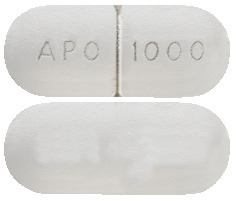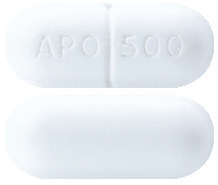What is in this leaflet
This leaflet answers some common questions about Ferriprox. It does not contain all the available information. It does not take the place of talking to your doctor or pharmacist.
The information in this leaflet was last updated on the date listed on the last page. More recent information on this medicine may be available.
Ask your doctor or pharmacist:
- if there is anything you do not understand in this leaflet,
- if you are worried about taking your medicine, or
- to obtain the most up-to-date information.
All medicines have risks and benefits. Your doctor has weighed the risks of you using this medicine against the benefits they expect it will have for you.
If you have concerns about taking Ferriprox, ask your doctor.
Keep this leaflet with your medicine. You may want to read it again.
What Ferriprox is used for
Ferriprox contains the active ingredient deferiprone and is used for the treatment of iron overload in patients with thalassaemia major who are unable to take desferrioxamine or in whom desferrioxamine therapy has proven ineffective.
Ferriprox is a medicine that removes iron from the body.
In a disease such as thalassaemia major, there is accumulation of iron in the body in those patients who are dependent on blood transfusions. If not removed, the iron levels can reach a serious level in the body as a result of the accumulation. By removing the excess iron from the body, Ferriprox can reduce the serious effects of iron overload.
Ask your doctor if you have any questions about why Ferriprox has been prescribed for you. Your doctor may have prescribed this medicine for another use.
Ferriprox is not addictive.
This medicine is available only with a doctor's prescription.
Before you take this medicine
When you must not take it
Do not take Ferriprox if you or your child:
- have a history of hypersensitivity (an allergy) to deferiprone or any of the other ingredients listed at the end of this leaflet. Signs of allergic reactions may include itchy skin, rash, shortness of breath and swelling of the face or tongue.
- have a history of repeated episodes of neutropenia (low white blood cell count).
- have a history of agranulocytosis (very low white blood cell count <0.5x109/L).
Do not take this medication if you are breast-feeding, if you are pregnant, or if you are trying to become pregnant. This medication could seriously harm your baby. You must use effective contraception while you are taking deferiprone.
Ask your doctor which method is best for you. If you become pregnant while taking Ferriprox, stop taking the medicine immediately and tell your doctor.
Do not take Ferriprox if the packaging is torn or seems to have been opened.
Do not take Ferriprox after the expiry date printed on the bottle.
Before you start to take it
Tell your doctor if you are allergic to any other medicines, foods, dyes or preservatives.
Tell your doctor if you are pregnant or intend to become pregnant or breast-feeding.
Tell your doctor if you have any of the following medical conditions:
- hepatitis
- HIV
- liver or kidney disease
- problems with your immune system.
Taking other medicines
Tell your doctor or pharmacist about all other medications that you are taking, even ones that you can buy without a prescription.
Do not take vitamin C or antacids containing aluminium at the same time as Ferriprox.
Do not take medicines which can cause neutropenia or agranulocytosis at the same time as Ferriprox. Your doctor can advise you on this and tell you which medicines you can safely take with Ferriprox.
How to take this medicine
It is important to follow the directions that your doctor has given to you.
How much to take
How much of Ferriprox that you take will depend on your weight. The usual dose of Ferriprox is three (3) times per day. Your doctor will advise you on how much to take.
Do not take more than the dose your doctor has recommended.
When to take it
Take your first dose in the morning. Take your second dose midday. Take your third dose in the evening.
You do not have to take this medicine with food. However, you may find it easier to remember to take your medicine, if you take it with your meals. If you experience nausea or vomiting, it may help to take your Ferriprox with some food.
How long to take it for
Do not stop taking Ferriprox unless your doctor tells you to.
If Ferriprox has been successfully reducing the levels of iron in your body, stopping Ferriprox will cause the iron levels in your body to rise again and the risk of problems with excess body iron may return.
If you forget to take it
Ferriprox will be most effective if you do not miss any doses.
If you forget to take a dose of Ferriprox, leave out that dose completely. Take your next dose at the normal time it is due.
Do not take a double dose to make up for missed doses.
If you have trouble remembering to take your medicine, ask your pharmacist for some hints to help you remember.
If you take too much (overdose)
If you think that you or anyone else may have taken too much of this medicine, immediately telephone your doctor or the Poisons Information Centre (Australia: 13 11 26 or New Zealand: 0800 POISON or 0800 764766) for advice. Alternatively, go to the Accident and Emergency department at your nearest hospital.
Do this even if there are no signs of discomfort or poisoning. You may need urgent medical attention.
While you are taking this medicine
Things you must do
Make sure that all of your doctors and pharmacists know about your use of Ferriprox. Remind them if any new medicines are about to be started.
Be sure to keep all of your doctor’s appointments so your progress can be checked.
Your doctor will ask you to come in for tests to monitor body iron load. As a precaution, your doctor may have your blood, liver and kidney tested regularly during treatment with Ferriprox. Some blood tests may be done as often as once a week to avoid side effects.
In addition, he or she also might ask you to undergo liver biopsies.
Things you must not do
Do not use Ferriprox to treat any complaint other than that directed by your doctor. It may not be safe to use Ferriprox for another complaint.
Do not give Ferriprox to someone else even if their symptoms are the same. It may not be safe for another person to use Ferriprox.
Things to be careful of
Ferriprox should not affect your ability to drive or use machinery. However, be careful driving, operating machinery or doing jobs that require you to be alert until you know how this medicine affects you.
Possible side effects
Tell your doctor as soon as possible if you feel unwell while you are taking Ferriprox. Like all medicines, Ferriprox may have some side effects. Most side effects are mild and patients often find that these wear off after a few weeks.
Your urine may become a reddish/brown colour. This is the most common side effect of Ferriprox and it is not harmful.
Tell your doctor immediately if you notice any symptoms of infection such as fever, sore throat or flu-like symptoms. The most serious side effect of deferiprone is the occurrence of a very low white blood cell count. This condition, known as severe neutropenia or agranulocytosis, has occurred in about 1.0% of people who have taken deferiprone in clinical studies. Because white blood cells help to fight infection, a low white blood cell count may place you at risk of developing a serious infection. If an infection of this nature is not discovered and treated early, it could cause death.
Tell your doctor if you notice any of the following:
- joint pain and swelling
- abdominal pain
- diarrhoea
- nausea
- vomiting
- increase in appetite
- headache.
These effects generally disappear after a few days to a few weeks of continued treatment.
If these events persist, you should consult your doctor.
Neurological disorders (such as tremors, walking disorders, double vision, involuntary muscle contractions, problems with movement coordination) have been reported in children who had been voluntarily prescribed more than double the maximum recommended dose of 100 mg/kg/day for several months and have also been observed in children with standard doses of deferiprone. The children recovered from these symptoms after Ferriprox discontinuation.
Other side effects not listed above may also occur in some patients.
Tell your doctor if you notice anything else that is making you feel unwell.
Do not be alarmed by this list of possible side effects. You may not experience any of them.
Storage and disposal
Storage
- Keep Ferriprox 500 mg tablets in their bottle until it is time to take your dose. If you take them out of their container, they may not keep well.
- Keep Ferriprox 500 mg tablets in a cool dry place where the temperature stays below 25°C.
- Do not store it or any other medicine in the bathroom or near a sink. Do not leave it in the car. Heat, cold and dampness can destroy some medicines.
- Keep Ferriprox where children cannot reach it. A locked cupboard at least one-and-a-half metres above the ground is a good place to store medicines.
Disposal
Return any unused medicine to your pharmacist.
Product description
What Ferriprox 500 mg Tablets look like
Ferriprox 500 mg tablets are white to off-white, capsule-shaped, film-coated, scored and imprinted “APO” bisect “500” on one side, and plain on the other side. The tablets are breakable in half.
Ingredients
Each tablet contains 500 mg of deferiprone as the active ingredient.
It also contains the following inactive ingredients:
- microcrystalline cellulose
- magnesium stearate
- silicon dioxide
- hypromellose
- macrogol 3350
- titanium dioxide.
Australian Registration Numbers
Ferriprox 500 mg tablets (bottle): AUST R 93946.
Sponsor
In Australia:
Chiesi Australia Pty Ltd
Suite 3, 22 Gillman Street
Hawthorn East, VIC 3123
In New Zealand:
Chiesi New Zealand Ltd
Bellingham Wallace Ltd
Suite 1, 470 Parnell Road
Parnell
Auckland 1052
Distributed in New Zealand by:
Healthcare Logistics
58 Richard Pearse Drive
Airport Oaks
Mangere
Auckland 2022
Email: [email protected]
Website: www.chiesi.com.au
This leaflet was last updated in
July 2022.
Published by MIMS October 2022








 Due to the nature of the serious adverse events which can occur with the use of Ferriprox, special monitoring is required for all patients. Treatment with Ferriprox should not be initiated if the baseline absolute neutrophil count (ANC) is low. Caution must be used when treating patients with renal insufficiency or hepatic dysfunction (see Section 4.4 Special Warnings and Precautions for Use).
Due to the nature of the serious adverse events which can occur with the use of Ferriprox, special monitoring is required for all patients. Treatment with Ferriprox should not be initiated if the baseline absolute neutrophil count (ANC) is low. Caution must be used when treating patients with renal insufficiency or hepatic dysfunction (see Section 4.4 Special Warnings and Precautions for Use). Gastrointestinal effects are more frequent at the beginning of therapy with Ferriprox and most resolve within a few weeks without the discontinuation of treatment. In some patients it may be beneficial to reduce the dose of Ferriprox and then scale it back up to 25 mg/kg three times per day.
Gastrointestinal effects are more frequent at the beginning of therapy with Ferriprox and most resolve within a few weeks without the discontinuation of treatment. In some patients it may be beneficial to reduce the dose of Ferriprox and then scale it back up to 25 mg/kg three times per day. Chemical name: 3-hydroxy-1,2-dimethyl-4(1H)-pyridone.
Chemical name: 3-hydroxy-1,2-dimethyl-4(1H)-pyridone.